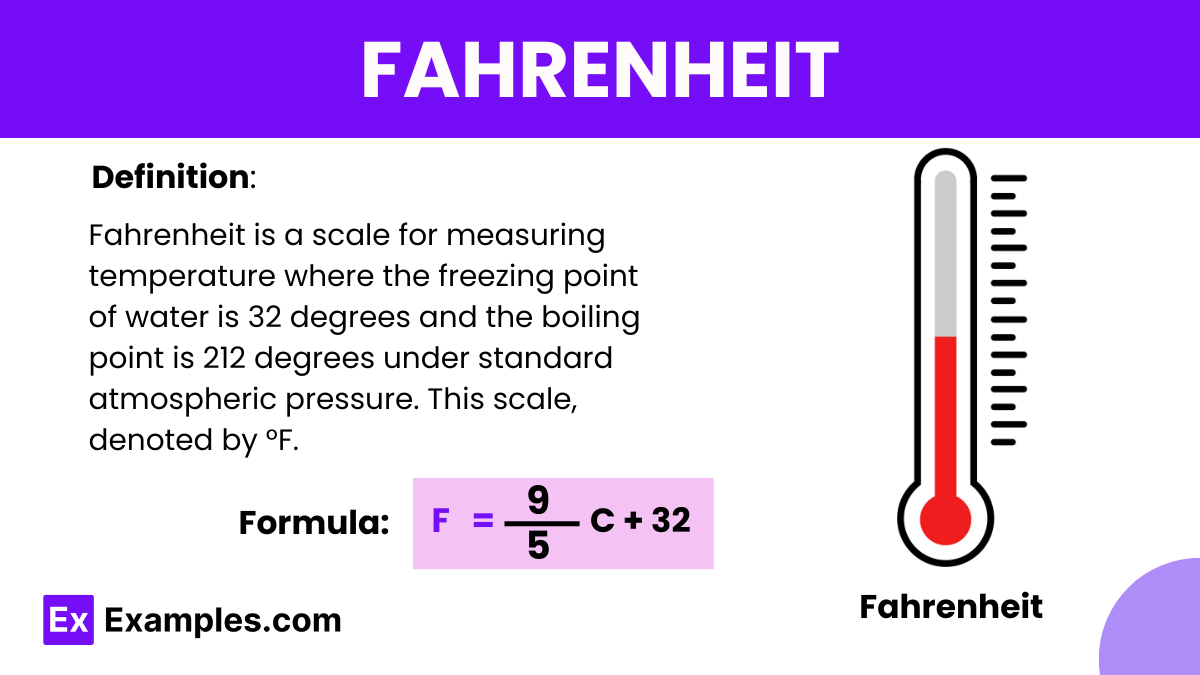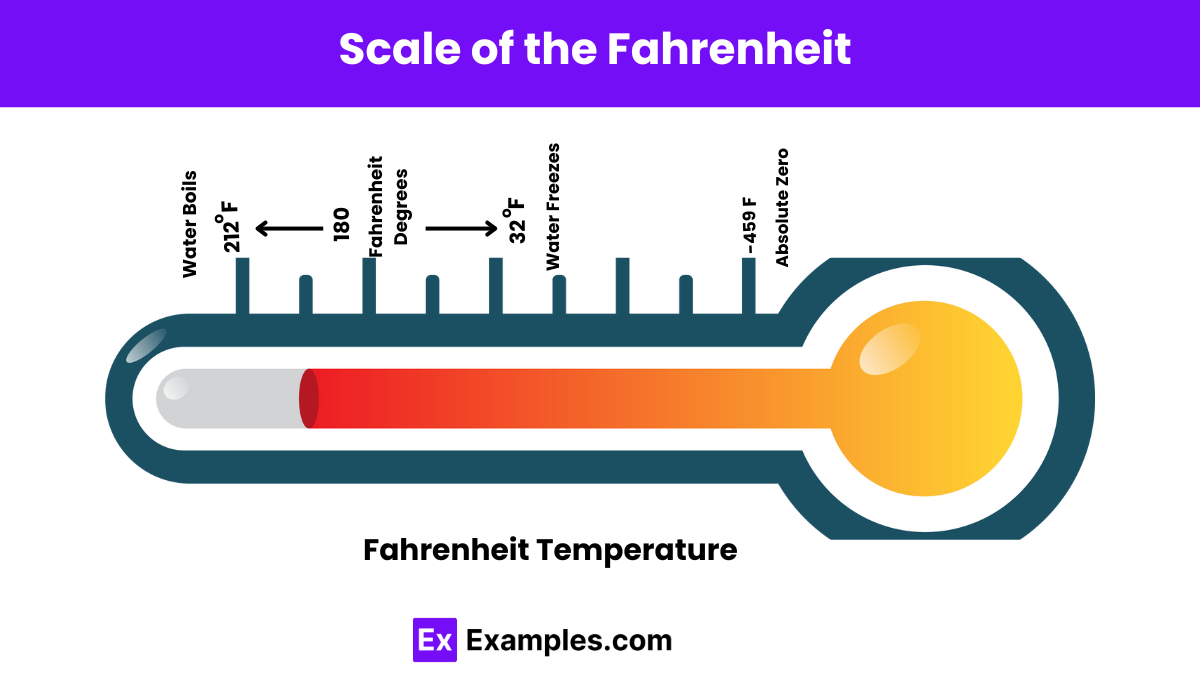What is the freezing point of water in Fahrenheit?
0°F
32°F
100°F
212°F

Fahrenheit is a temperature scale named after the German physicist Daniel Gabriel Fahrenheit, who proposed it in 1724. In this scale, water freezes at 32 degrees Fahrenheit (°F) and boils at 212 degrees Fahrenheit at standard atmospheric pressure. This contrasts with the Celsius scale, commonly used in physics and other sciences, where water freezes at 0 degrees Celsius (°C) and boils at 100 degrees Celsius. The Fahrenheit scale is still commonly used in the United States for weather forecasts and in everyday applications.
To convert a temperature from Celsius to Fahrenheit, you can use the following formula:
Where:
This formula multiplies the Celsius temperature by 9/5 (or 1.8) and then adds 32 to the result to find the equivalent temperature in Fahrenheit..
Let’s say you have a temperature of 20 degrees Celsius and you want to convert it to Fahrenheit. You can use the formula:
F = 9/5C+32
Substituting 𝐶C with 20:
𝐹 = 9/5×20+32
𝐹 = 36+32
𝐹 = 68
So, 20 degrees Celsius is equivalent to 68 degrees Fahrenheit.
C = 95(F−32) Where 𝐶C is the temperature in Celsius and F is the temperature in Fahrenheit.
| Aspect | Celsius (°C) | Fahrenheit (°F) |
|---|---|---|
| Developed by | Anders Celsius (1701–1744) | Daniel Gabriel Fahrenheit (1686–1736) |
| Introduced | Mid-18th century | Early 18th century |
| Base Unit | Degree Celsius | Degree Fahrenheit |
| Freezing Point of Water | 0°C | 32°F |
| Boiling Point of Water | 100°C at standard atmospheric pressure | 212°F at standard atmospheric pressure |
| Increment Size | One degree Celsius is larger; each degree is equal to 1.8 degrees Fahrenheit | One degree Fahrenheit is smaller; it takes more degrees to cover the same change in temperature |
| Usage | Used worldwide, except in the United States and a few other countries | Primarily used in the United States, Bahamas, Belize, and a few other countries |
| Conversion Formula to Other | 𝐹 = 95𝐶+32 (To convert to Fahrenheit) | 𝐶 = 59(𝐹−32) (To convert to Celsius) |
Absolute zero is the lowest possible temperature where all molecular motion stops. It’s a theoretical limit in thermodynamics, representing the minimum internal energy a thermodynamic system can have.
In the Fahrenheit scale, absolute zero is approximately -459.67 degrees Fahrenheit (°F). This temperature corresponds to -273.15 degrees Celsius (°C) and zero Kelvin (K), which are equivalent values in other temperature scales. Absolute zero is primarily used in scientific contexts, especially in physics and chemistry, to describe extreme conditions or theoretical states.

The Fahrenheit scale is marked by several key points that relate to everyday phenomena, particularly in terms of water’s behavior and human comfort levels. Here’s an overview of some significant points on the Fahrenheit scale:
The Fahrenheit scale is divided into degrees, where each degree is 1/180 of the interval between the freezing point and boiling point of water at sea level. Here are some additional common reference points:
The Fahrenheit scale is not inherently more accurate, but it is more precise because it uses a smaller interval between degrees. This can make it useful in fields requiring fine temperature adjustments.
One practical advantage is its precision without using decimals, which is useful in weather forecasting and HVAC settings. It’s also historically and culturally embedded in the U.S., making it a familiar reference for most residents.
Extreme temperatures, like those in Death Valley or Arctic regions, are reported in Fahrenheit in the U.S., providing immediate context and relevance for residents familiar with the scale.
Text prompt
Add Tone
10 Examples of Public speaking
20 Examples of Gas lighting
What is the freezing point of water in Fahrenheit?
0°F
32°F
100°F
212°F
What is the boiling point of water in Fahrenheit?
100°F
180°F
212°F
373°F
If a temperature is 68°F, what is it in Celsius?
10°C
20°C
25°C
30°C
How do you convert Fahrenheit to Celsius?
(F - 32) / 1.8
(F + 32) / 1.8
(F - 32) × 1.8
(F + 32) × 1.8
What is 0°F in Celsius?
-17.78°C
-18°C
-16.67°C
-15°C
Convert 100°F to Celsius.
30°C
35°C
37.78°C
40°C
Which of the following is a higher temperature?
40°C
104°F
Both are the same
Cannot be determined
At what Fahrenheit temperature does water boil at sea level?
100°F
180°F
200°F
212°F
If the temperature outside is 95°F, what is it in Celsius?
35°C
40°C
45°C
50°C
What is the equivalent of 50°C in Fahrenheit?
120°F
122°F
124°F
126°F
Before you leave, take our quick quiz to enhance your learning!

